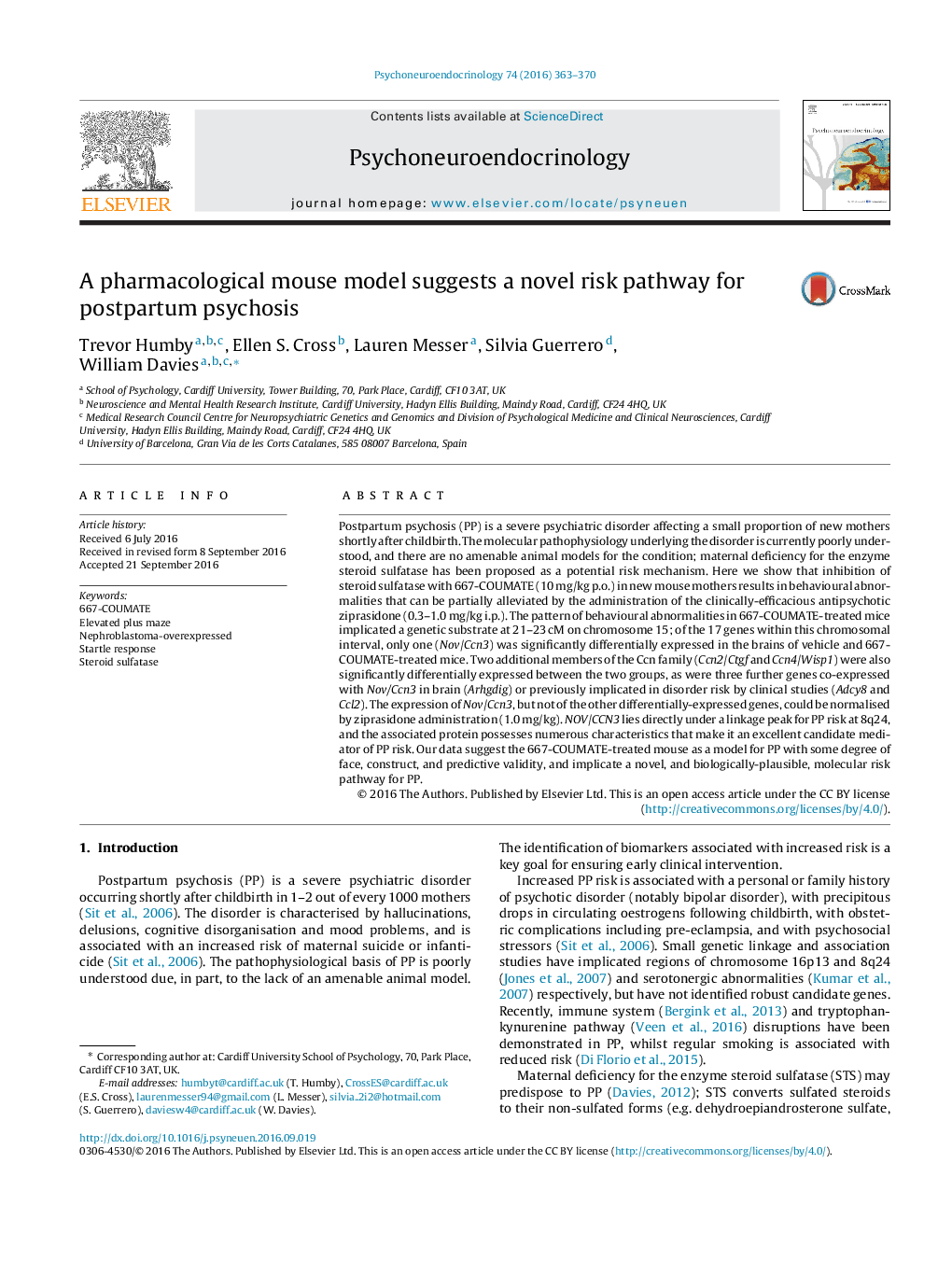| Article ID | Journal | Published Year | Pages | File Type |
|---|---|---|---|---|
| 4934679 | Psychoneuroendocrinology | 2016 | 8 Pages |
â¢Postpartum psychosis (PP) is a severe psychiatric disorder of unknown cause.â¢Steroid sulfatase (STS) deficiency may influence PP risk.â¢Postpartum inhibition of STS in mice results in behavioural and genetic abnormalities.â¢These abnormalities can be alleviated with an antipsychotic drug.â¢The study suggests a new mouse model and a biological risk pathway for PP.
Postpartum psychosis (PP) is a severe psychiatric disorder affecting a small proportion of new mothers shortly after childbirth. The molecular pathophysiology underlying the disorder is currently poorly understood, and there are no amenable animal models for the condition; maternal deficiency for the enzyme steroid sulfatase has been proposed as a potential risk mechanism. Here we show that inhibition of steroid sulfatase with 667-COUMATE (10Â mg/kg p.o.) in new mouse mothers results in behavioural abnormalities that can be partially alleviated by the administration of the clinically-efficacious antipsychotic ziprasidone (0.3-1.0Â mg/kg i.p.). The pattern of behavioural abnormalities in 667-COUMATE-treated mice implicated a genetic substrate at 21-23Â cM on chromosome 15; of the 17 genes within this chromosomal interval, only one (Nov/Ccn3) was significantly differentially expressed in the brains of vehicle and 667-COUMATE-treated mice. Two additional members of the Ccn family (Ccn2/Ctgf and Ccn4/Wisp1) were also significantly differentially expressed between the two groups, as were three further genes co-expressed with Nov/Ccn3 in brain (Arhgdig) or previously implicated in disorder risk by clinical studies (Adcy8 and Ccl2). The expression of Nov/Ccn3, but not of the other differentially-expressed genes, could be normalised by ziprasidone administration (1.0Â mg/kg). NOV/CCN3 lies directly under a linkage peak for PP risk at 8q24, and the associated protein possesses numerous characteristics that make it an excellent candidate mediator of PP risk. Our data suggest the 667-COUMATE-treated mouse as a model for PP with some degree of face, construct, and predictive validity, and implicate a novel, and biologically-plausible, molecular risk pathway for PP.
